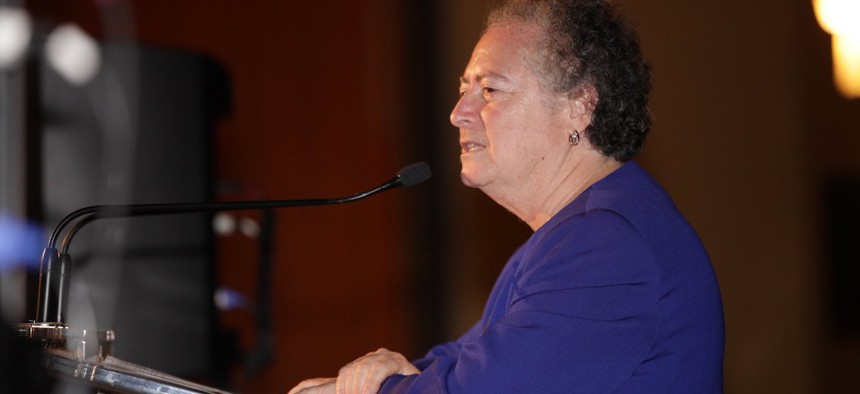Coronavirus
Will nonprofits stay virtual post-pandemic?
Nonprofit leaders share their lessons from the shift to remote work.

President & CEO of the Fortune Society JoAnne Page. The Fortune Society
As the coronavirus pandemic continues, employers are left wondering what the future will bring for their workers. Several large technology companies have already made commitments to let employees continue to work from home for the coming months – or even forever, if they want to. But what reality awaits for those in the nonprofit sector?
“I think our best practice is probably going to be a hybrid,” said JoAnne Page, president and CEO of The Fortune Society, during NYN Media’s webinar on Thursday. The nonprofit organization’s shift to offering many of its services digitally has created innovative approaches, such as allowing formerly incarcerated clients do practice job interviews with volunteers by phone. “Our ability to deliver high-skills training without people having to commute to us is working better in some cases in terms of attendance,” Page said.
John Kastan, interim CEO of The Jewish Board, similarly has seen attendance rates increasing for some of its programs. “That’s because people are home right now, that may change as the pandemic changes,” he said.
There are some organizational benefits in the shift to remote work, these leaders say. “Because it’s easier for people to connect and engage, we’ve been able to have more communication with our board, our funders and others,” said Sheena Wright, president and CEO of the United Way of New York City. “Every other week we do a town hall … you don’t have to wait for the annual report or board meeting.”
But that shift to virtual programming has also come with drawbacks – especially given New York City’s digital divide. More than half a million households in the city don't have internet access at home, according to the Citizens' Committee for Children of New York, and others may not have devices needed to access services now being offered remotely by organizations.
The Fortune Society has been supplying people with cellphones to cross that divide, but without reassurance that it will get reimbursed for that additional cost.
Other logistical challenges emerge in providing tele-health services, Kastan said, given that for clients stuck at home with limited space may have little privacy for mental health counseling and other health services. Increased reliance on technology also makes cybersecurity all the more critical at a time when nonprofits are already strapped for cash.
“We had an instance a couple days ago with a pretty large social services organization that their entire system was hacked,” said Ethan Kahn, a partner at the accounting and consulting firm Mazars USA. “Not only was the system hacked, somehow or another, the cloud backup they had was hacked. And so they’re held up to a couple hundred thousand dollars’ ransom.”
And unlike tech giants, many nonprofits need to still offer in-person support throughout the health crisis. This means they have to contend with the same challenges facing other essential businesses, including obtaining high-demand personal protective equipment such as masks and gloves and offering hazard pay for workers on the front lines without additional funding from the government.
“One of the very big worries we have is what is going to happen as the city and state deal with their funding challenges?” Page said.
Big questions about what the “new normal” will look like for the nonprofit workforce remain unanswered. To try to solve them, organizations are creating work groups and paying close attention to local and state guidance as they figure out what reopening will look like for them.
“We’re trying to have as inclusive a process as possible,” Kastan said.
